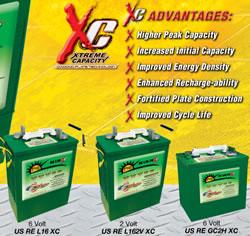New Zealand Takes First in Engineering Contest
Wowing jurors with its attention to detail, craftsmanship, and unusual energy visualization system, New Zealand (Victoria University of Wellington) received first place today in the U.S. Department of Energy Solar Decathlon 2011 Engineering Contest for its First Light house.
Wowing jurors with its attention to detail, craftsmanship, and unusual energy visualization system, New Zealand (Victoria University of Wellington) received first place today in the U.S. Department of Energy Solar Decathlon 2011 Engineering Contest for its First Light house.
"The New Zealand house was beautifully executed, with extreme attention to detail and craftsmanship and an intuitive tree-ring visualization system, which makes it easy to understand energy use throughout the house," said Engineering Contest juror Dr. Hunter Fanney, chief of the building energy and environment division of the engineering laboratory at the National Institute of Standards and Technology.
Coming in second place, Southern California Institute of Architecture and California Institute of Technology received praise from the Engineering Jury for its forward-thinking control system with ultimate user interaction and its unique thermal envelope design that uses commercially available materials such as recycled denim.
The University of Tennessee took third place for its Living Light house, which incorporates off-the-shelf technology for heating and cooling equipment. The team also received praise for its vented double-glass façade.
According to Richard King, Solar Decathlon director, the engineering contest is very important to winning the overall competition.
"The key to winning the Solar Decathlon is getting the house to perform well in the measured contests, which account for half of the points available," King said. "The best-performing house is a well-engineered house, which is why the Engineering Contest is so important."
For the Engineering Contest, the jury evaluated the houses on:
•Functionality – To ensure the energy and HVAC systems function as intended
•Efficiency – To measure how much energy the house would save over the course of a year relative to using conventional systems
•Innovation – To gauge the design solutions and their true market potential
•Reliability – To assess the systems and how well they operate at a high level of performance
•Documentation – By reviewing drawings, a project manual, and an audiovisual engineering presentation that accurately reflect the project as constructed on the competition site.
For full scoring details, visit the Engineering Contest scores page.
Featured Product

U.S. BATTERY RENEWABLE ENERGY SERIES DEEP CYCLE BATTERIES
Our RE Series batteries are designed to provide the highest peak capacity, longest cycle life, and greatest reliability for use in industrial or residential renewable energy applications. Renewable Energy Series batteries utilize the company's exclusive XC2â„¢ formulation and Diamond Plate Technology® to create the industry's most efficient battery plates, delivering greater watt-hours per liter and watt-hours per kilogram than any other flooded lead-acid battery in the market. Our Deep Cycle batteries are engineered to work with solar panels as well as other renewable energy applications.
